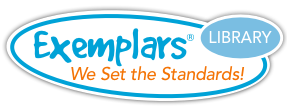Grade 3 - Place Value Unit
Standards covered:
- 3.2 Number and operations
-
3.2A
Compose and decompose numbers up to 100,000 as a sum of so many ten thousands, so many thousands, so many hundreds, so many tens, and so many ones using objects, pictorial models, and numbers, including expanded notation as appropriate.
-
3.2B
Describe the mathematical relationships found in the base-10 place value system through the hundred thousands place.
-
3.2C
Represent a number on a number line as being between two consecutive multiples of 10; 100; 1,000; or 10,000 and use words to describe relative size of numbers in order to round whole numbers.
-
3.2D
Compare and order whole numbers up to 100,000 and represent comparisons using the symbols >, <, or =.
The Place Value Unit involves understanding and representing the relative position, magnitude and relationships within the numeration system in order to answer questions such as:
- How can you use the additive property of place value to decompose this number?
- How can you use the multiplicative property of place value to describe the meaning of each digit in the number 654,321?
- How can you use the base ten property of place value to explain the relationship between each of the digits in the number 555,555?
- What other way(s) can you use hundred thousands, ten thousands, thousands, hundreds, tens, and ones to show this number without changing its value?
Summative Assessment Task
Students use inequality symbols to compare the home town populations of three teams and round population numbers to the nearest hundreds place to determine which team has the greatest combined rounded population.
Instructional Tasks/Formative Assessments
Students estimate to the nearest hundred to determine if Jose has sold all of his bananas.
Rounding to the nearest 10, students determine how many insects are let go from glass jars.
Students round the number of book pages read to the nearest hundred.
Students determine if a relay team meets its goal of riding a combined total of 100 miles and which bikers are experienced riders.
Students determine the number of tables that Mrs. Gomez will need for a party to celebrate the hard work of her class.

The N/A classification refers to TEKS Standards that cannot be assessed through problem solving.
For this reason, tasks have not been included for these particular standards.
K.7A K.7B K.9B K.9C K.9D